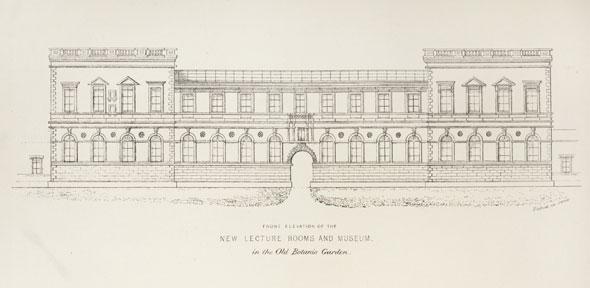
1 March 2016 to 31 August 2019
This Leverhulme and Newton Trust funded project examines the practices of collecting, display and demonstration in the sciences in the late-nineteenth and early-twentieth century.
As we know, in particular from studies of South Kensington, the cultures of collecting and display dominated the teaching and public understanding of Victorian science. This period also saw the rise of the laboratory, which has loomed large in historical accounts. Yet, through the building of scientific sites, the museum and laboratory co-existed, and techniques, objects and personnel were shared between them. Through analysis of architecture (plans, surviving buildings), objects (in collections and records of collections) and archives (recording the politics of site-building), the present project reconsiders the relationship between the museum and the laboratory by recovering the 'lost museums' of Cambridge science.
The focus study is the 'New Museums Site' in central Cambridge, in the period 1865–1936. These dates are given by the life of 'Salvin's Buildings', which were opened in 1865 in the middle of the site and were demolished in 1936 to make way for extensions to the Cavendish Laboratory (Department of Physics). Salvin's Buildings housed the collection of the Cambridge Philosophical Society, alongside museums of mechanism, mineralogy, botany, comparative anatomy and zoology. In some instances the fate of these collections is relatively easy to chart, in particular the zoological collections that are still housed on the site; but in others the composition, as well as the use and fate of the collections are unknown. The unit of analysis for the project will be individual collections (rather than objects or departments). The project is also archaeological in scope, and will seek to recover not only the objects in the collections, but also the places in which they were housed and the aesthetics of late-nineteenth and early-twentieth century scientific display.
The project is intended as a contribution to three aspects of recent scholarship. First, the New Museums Site has long played a key role in histories of laboratory science, at the expense of an understand of its museums; histories of scientific museums, meanwhile, have typically focused on major urban centres such as London. Hence the recovery of a specifically academic site featuring both kinds of institution provides a wholly novel framework for looking at the nature of scientific teaching and display. The period under consideration saw science gain large-scale institutional backing, and my project will offer new insights into this decisive change. Second, this project intersects with other research that seeks to recover 'lost museums', for example the current project of that name run by Brown University's Jenks Society. Third, the New Museums Site is currently in the midst of another period of dramatic change, as science departments gradually move to other sites, mainly in West Cambridge. Historical understanding of the New Museums Site – and also of the changing nature of scientific 'sites' in general – is therefore timely and can inform the re-interpretation of the New Museums Site in future years.
People
Dr Boris Jardine
Publications
Boris Jardine, 'The museum in the lab: Historical practice in the experimental sciences at Cambridge, 1874–1936', in Boris Jardine, Emma Kowal, Jenny Bangham (eds), How Collections End: Objects, Meaning and Loss in Laboratories and Museums, BJHS Themes Vol. 3 (Cambridge: CUP, forthcoming 2019)
Boris Jardine, Emma Kowal, Jenny Bangham (eds), How Collections End: Objects, Meaning and Loss in Laboratories and Museums, BJHS Themes Vol. 3 (Cambridge: CUP, forthcoming 2019)
